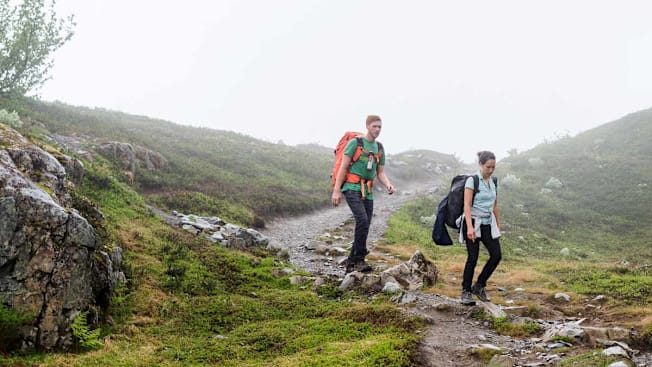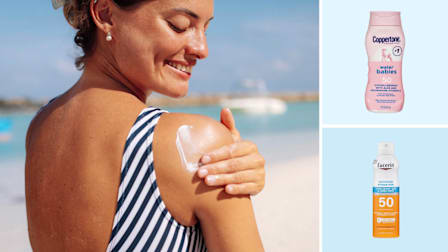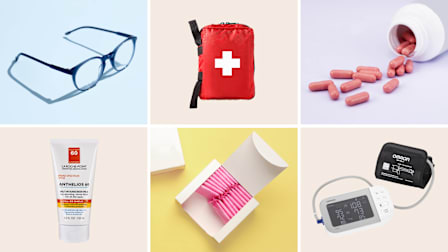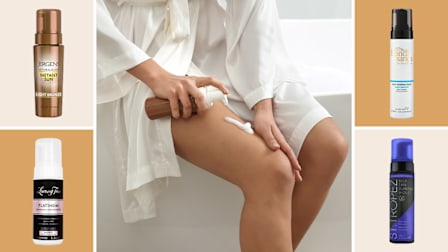Debunking Sunscreen Myths
Dermatologists weigh in on the truth about common sun protection misconceptions
When you shop through retailer links on our site, we may earn affiliate commissions. 100% of the fees we collect are used to support our nonprofit mission. Learn more.

If it’s a hot, sunny day and you’re going to be outdoors for hours, you may already know you should slather on sunscreen before leaving the house. But what about when it’s not so sunny, you don’t plan to be out long, or maybe you’re not outside at all—just sitting near a sunny window? Even people who are diligent about sun protection may let their guard down on occasions when sunscreen doesn’t seem as important—or fall for misinformation about sunscreen that they see touted on social media.
“There are many misconceptions about when you do or don’t need sunscreen, and which ones are most effective,” says Valerie Harvey, MD, director of the Hampton University Skin of Color Research Institute and president-elect of the Skin of Color Society. “But the fact is that any time in the sun is potentially risky and requires smart sun behavior.” Here’s the truth about seven common sunscreen myths.
- You Can Skip Sunscreen on Cloudy Days
- Chemical Sunscreens Are Harmful
- Beef Tallow Is a Safe Sunscreen
- You Don't Need Sunscreen If You'll Be Outside Briefly
- A Base Tan Protects Your Skin
- You Don't Need Sunscreen While Driving
- Makeup With SPF Is Enough
- You Only Need to Reapply After Swimming
- It's Okay to Skip Sunscreen in the Late Afternoon
- Top Sunscreens
You Can Skip Sunscreen on Cloudy Days
“Contrary to popular belief, you are at risk for sun damage even if you can’t see the sun,” says Joshua Zeichner, MD, an associate professor of dermatology at Mount Sinai Hospital in New York.
Chemical Sunscreens Are Harmful
Chemical active ingredients have gotten a bad rap in recent years over concerns that they absorb into the bloodstream and could then cause hormonal disruptions or other issues. (“Active ingredients” is the term used to describe the ones in sunscreen that shield your skin from UV rays, as opposed to inactive ingredients, such as moisturizers or fragrances.) These include avobenzone, homosalate, octinoxate, octocrylene, and oxybenzone.
Oxybenzone is the chemical that has raised the most concerns. It has been eliminated from the majority of sunscreens, so it’s easy to avoid. For other chemical ingredients, most experts still agree that their benefits as superior UV filters outweigh any potential risks. “There’s still no conclusive evidence that this [absorption] translates to harm in humans,” says Mona Gohara, MD, associate clinical professor of dermatology at Yale School of Medicine. “What we do know for certain is that unprotected sun exposure increases the risk of skin cancer, and skipping sunscreen is far more dangerous than using it.”
Beef Tallow and Other Natural Ingredients Make the Safest Sunscreens
Social media influencers are all about the supposed beauty benefits of beef tallow (aka, cow fat) for moisturizing skin. Some even claim that beef tallow is an option for those who want a sunscreen that doesn’t contain chemical active ingredients—joining a long list of other natural substances purported to safeguard your skin. “Coconut oil, olive oil, almond oil, and shea butter are commonly cited as sun protective,” says Julie Williams Merten, PhD, a professor of public health at the University of North Florida in Jacksonville, whose research often covers sun safety and skin cancer. “But with SPFs ranging from 1 to about 8, none of them offer any real protection against UV rays.” Experts say you need at least an SPF 30 to adequately prevent burning and skin damage that can lead to skin cancer. And despite what you might see on social media, there’s no scientific evidence that beef tallow on its own has much, if any, SPF.
There are recipes online for making your own sunscreen with beef tallow and zinc oxide. Zinc oxide and titanium dioxide are so-called natural, or mineral, active ingredients, and they aren’t absorbed through the skin. But dermatologists caution against using homemade sunscreen. “SPF formulation is highly regulated by the Food and Drug Administration to ensure uniform UV coverage,” says Gohara “Without rigorous testing, there’s no guarantee of sufficient protection.” You can find some commercially made beef tallow sunscreens with zinc oxide. Consumer Reports hasn’t tested any of these, but historically, mineral-based sunscreens haven’t performed as well in our tests as those that contain chemical active ingredients. None of the mineral sunscreens that we’ve tested over the years scored high enough to be recommended.
As for beef tallow’s moisturizing benefits, slathering fat on your skin may help lock in moisture and provide short-term hydration. “But it doesn’t have the right levels or types of fatty acids you need to support the skin barrier and keep it healthy in the long term,” says Gohara.
You Don't Need Sunscreen If You'll Be Outside Briefly
Forgetting your sunscreen for the occasional short outing—commuting to work, running some errands, eating a quick lunch on the patio—isn’t the end of the world. “But if you do that every day, the sun damage will add up,” says Gohara. “Even a 5-minute walk every day at lunch means a lot of cumulative sun exposure over the course of a year.”
A Base Tan Protects Your Skin
“Your skin color at the time of unprotected sun exposure can protect you to some extent, because the more melanin you have in your skin, the more protection you have,” says Maritza Perez, MD, a professor of dermatology at the University of Connecticut School of Medicine. (Melanin is what produces skin pigment.) But a tan is actually a sign that you’ve already damaged your skin, so you should be more careful about shielding it. And even people with naturally dark skin need to protect it from the sun.
You Don't Need Sunscreen While Driving
Glass does block most UVB rays, so you won’t get sunburned through a window. But UVA rays—the ones that cause skin aging and contribute to skin cancer—can penetrate most window glass unless it’s been specially treated with UV-blocking tint. That includes the windows in your home or office as well as your car, and the damage is cumulative. If you drive often—and for long distances—you should apply sunscreen. Gohara says that skin cancer on the left side of the face and body is much more common as a result of people logging a lot of time behind the wheel.
Makeup With SPF Is Enough
Using a foundation or powder that contains sunscreen may be better than nothing, but not by much. The biggest problem with SPF makeup is that it’s nearly impossible to use enough—or reapply frequently enough—to achieve adequate protection. You need to use a full teaspoon of sunscreen to protect your face. “If you used that much foundation, your makeup would look caked on,” Zeichner says. “Think of makeup with SPF like icing on the cake to give added protection over your base layer of sunscreen.”
You Only Need to Reapply After Swimming
If you’ve done a thorough job of applying a broad-spectrum sunscreen with an SPF of 30 or higher, your skin will be well protected for your first couple of hours poolside or at the beach. (Experts still recommend that you sit under an umbrella and cover up with clothing and a wide-brimmed hat for extra protection.) But a single application of sunscreen—no matter how much you slather on or how high the SPF—doesn’t last all day. “You need to do a full reapplication every 2 hours—even if you’re not getting wet,” Zeichner says. If you skip that, you’re very likely to go home with a sunburn. And if you do go in the water, be sure to reapply sunscreen afterward even if you’re in the first 2-hour window.
It's Okay to Skip Sunscreen in the Late Afternoon
The sun’s rays are strongest between 10 a.m. and 4 p.m. The intensity of the burning UVB rays diminishes a little bit every hour after that. The closer it is to sunset, the weaker the sun’s rays will be. But as long as there’s daylight, UVA rays maintain their intensity. Where you live will also affect just how strong the sun is, even late in the day. Being closer to the equator or at a high altitude means you’ll experience more-intense sunlight at all times of the day.
Top Sunscreens
Below, we highlight four highly rated sunscreens from our tests, listed in alphabetical order. And check out CR’s ratings of dozens of sunscreens or the best mineral and spray sunscreens.
@consumerreports Our tests of over 100 sunscreens show that the skin protection the different products provide varies greatly. Tap the link in our bio to see the best sunscreens of the year. #skintok #sunscreen #skincare #summertok
♬ original sound - Consumer Reports
































